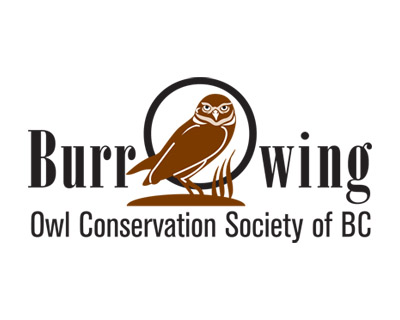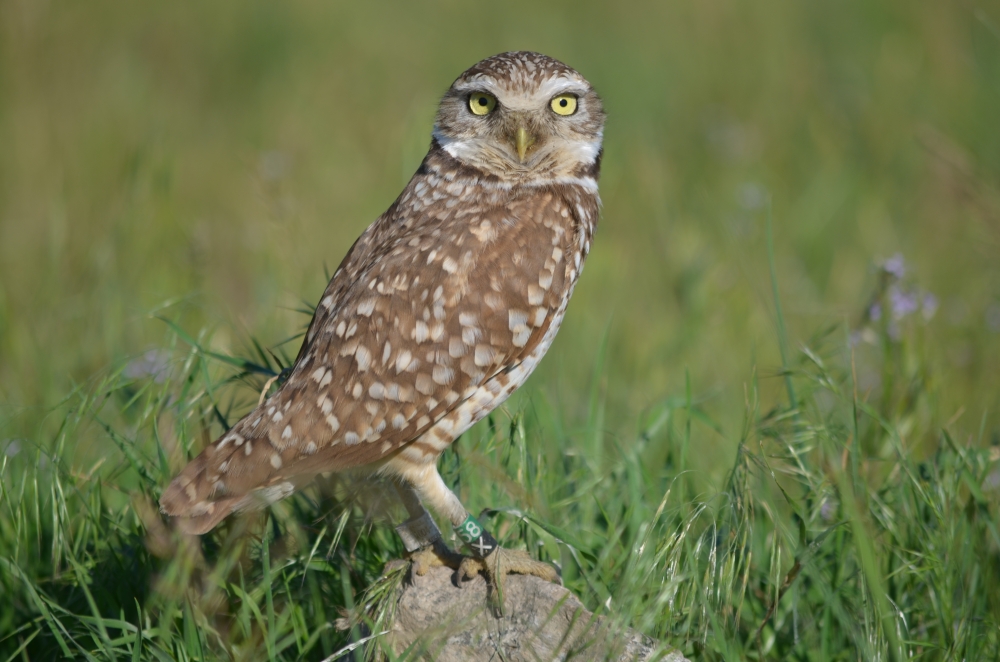Canadian populations of the owls have declined more than 90% over last 40 years
"They grew up into adults at the zoo over winter," said Graham Dixon-MacCallum, a conservation research population ecologist with the Wilder Institute/Calgary Zoo.
"We're releasing them as adults now in the hope that then they'll mate and produce more baby owls."
That's important because the population of burrowing owls, which are smaller than pigeons and distinguishable by their long legs, has shrunk in Canada over the past 40 years.
According to Canada's list of species at risk, the Canadian population of burrowing owls reduced by 90 per cent from 1990 to 2000, and by a further 64 per cent between 2005 and 2015 with estimates of fewer than 500 breeding pairs in Canada today.
"Burrowing owls were once a common element of the landscape in the Prairies and southern interior of British Columbia," reads a report from the Committee on the Status of Endangered Wildlife in Canada.
"They are now rare throughout their Canadian range."
Severe habitat loss, climate change and other changes to the owl's environment has contributed to the population loss, and the Wilder Institute/Calgary Zoo says last-hatched owlets within each wild family have about a three per cent chance of surviving their first year.
"Even those that do survive to leave the nest are very, very unlikely to survive migration and unlikely to return to Canada," Dixon-MacCallum said.
That's why the organization has sought to head-start the youngest owlets with human care at its Wildlife Conservation Centre, giving them a chance to grow up in an controlled environment without the threats of predators, extreme weather, and other factors.
The owls are brought back near where they were originally hatched into installed secure burrows.
A netted enclosure is placed around owl pairs and their burrows to ensure they can safely mate and lay eggs and new couples are provided with food until eggs can be laid.
The Wilder Institute/Calgary Zoo says that to date, 152 owlets have emerged out of the nests.
"I think that efforts like this, for burrowing owls or for other species at risk, are important, because really, all these species, I think, have really intrinsic value to exist," Dixon-MacCallum said.
"And if we don't try and do something to protect them, then we'll lose them."
Dixon-MacCallum said he knows that cynics might wonder whether the owls are worth saving due to their declining numbers.
"But burrowing owls have existed on the prairie for millennia. And they've only been declining for the last several decades, and that's because of changes to the landscape that are happening because of things that people are doing," he said.
"And if people are part of the cause of a decline, it means we can also be part of the cause of a solution."
The Wilder Institute/Calgary Zoo hopes to see the 20 owls mating and laying eggs this season. The netting enclosures will soon be removed so the owls can return fully to the wild.
The organization will continue to monitor the owls released this year. In July, a new cohort of 30 owls will be brought into the zoo, where they will stay over the winter.

